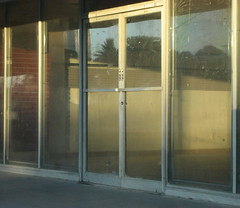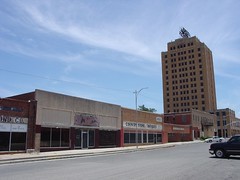Vacant storefronts - they're not just for ghost towns anymore

Posted February 25, 2009 at 1:18PM
Last night, President Obama spoke of turning difficulty into opportunity on a grand scale. But the grand scale comprises many smaller, local stories where we must also do our best to do the same.
In particular, in addition to Switchboard, I write for Rooflines, the provocative blog of the National Housing Institute. Matthew Hersh has a terrific post over there about how the recession is affecting traditional downtowns in ways that we might not have forecast:
"From the City of Millville way down in South Jersey to Morristown up in the northern state suburbs, downtowns across New Jersey are approaching alarming levels of storefront vacancies.
"And why? Well, you can name any number of reasons, of course, stemming from the obvious economic hit that retailers have taken, to less obvious reasons like how stringent a town's permit process is in opening a retail business.
"With the closing of big-box stores like Circuit City and Linens-N-Things, whose value went from $1.3 billion in 2006 to a stunning $1 million in 2009, municipalities are going to be faced with hundreds of thousands of square feet of basically vacant warehouse space, that was, in most cases, zoned and developed specifically with those stores in mind. While it will be interesting to see how the big-box model will change in this new economy and how towns cope with breathtaking amounts of vacant space, for now, we're going to look at the downtown.
"We used to blame the Big Boxes on the highway for running Ma and Pa out of business, but what happens when the sharpest drop in consumer spending since the 1982 recession down those very Big Boxes? Will downtowns suddenly rebound? Well, without our help, it's unlikely, but in the meantime, communities that are anything but ambivalent are starting to think out of the box as to how to fill the retail void in the form of temporary infill . . ."
Matthew points to some of the methods that can be used to spur revitalization of these properties. Read the whole post here.
Reclaiming vacant properties and undertaking related revitalization is one of the best things we can do not just economically and socially, but also environmentally, since it saves resources to recycle existing infrastructure, and placing more development in existing communities displaces what would otherwise be sprawl, with its much higher greenhouse gas emissions. Easier said than done, but let's turn these vacancies into opportunity.

